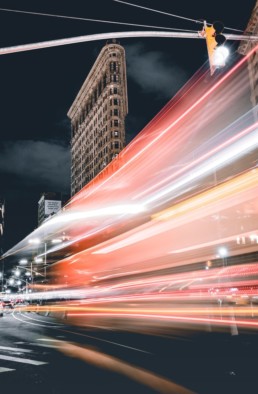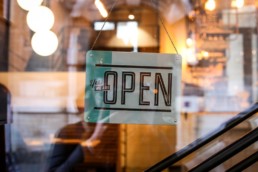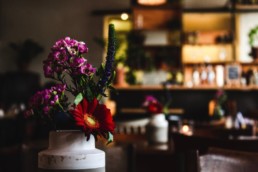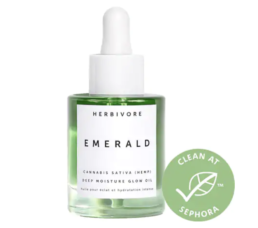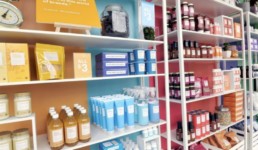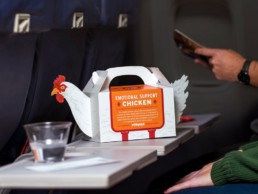O2O: Bridging the Gap for the Online-to-Offline Consumer Experience
Maggie Tessier
As e-commerce becomes more prevalent year-over-year, online and brick & mortar stores (and even DTCs) are scrambling for consumer attention. At the same time, demands for extraordinary experiences grow from both a digital and a physical retail point of view, but from the consumer perspective and certainly from the brand perspective, there is a struggle between the two worlds when it comes to how they work together.
Enter O2O: Online-to-Offline commerce.
O2O is a business strategy designed to bring online customers to brick & mortar locations, as well as create a seamless digital experience before, during, and after their purchases.
Many factors conspired together to create the need for an O2O strategy, but the most important one is that consumers see desktop-mobile-physical shopping and buying as fluid while many companies and brands distinguish them, set attribution targets for each, train and incentivize employees in silos, and make it hard to share data between digital and physical interactions.
The positive spin and the core of O2O strategy? More touchpoints and more opportunities.
Gone are the days of warehouse shelving and big brown boxes stuffed with peanuts and bubble wrap–consumers are driving expectations higher while asking for eco alternatives and at-my-fingertips convenience all at the same time and from every step of the buyer journey.
According to a December 2018 Shopify article, “Every brand wants to capture its market in totality, to reach customers new and old through mediums on-site and off. Today if your company doesn’t have a multi-channel marketing strategy…good luck keeping up.”
This means providing online, brick & mortar, catalog, mobile, and social options in unison. The article also explains that, on average, multi-channel marketing and selling increases revenue by 38%, 120%, 190% with each additional channel respectively.
This kind of growth is considerable and needed in today’s retail climate. However, one area that still gets left unnoticed is how one bridges the online/on-site gap.
Typically, businesses offer consumers choices: they can buy online and have it delivered, or they can go to a store and make a purchase. But what about those who research online and then go to the store to make their purchase? What happens when they order a product and want to pick it up in-store? More so, how do businesses convince consumers to buy online and pick up in store to not only create a more well-rounded shopping experience but to also create their own unique experience and brand-in-hand experience? What is the incentive for consumers to do both?
The answer lies in the conversation that already surrounds O2O. The known benefits of O2O commerce allow businesses to treat online and offline channels as complementary rather than competitive.
- Rapid in-Store pickup of products purchased online
- Online purchase of products while at a physical store (quantity, size, color variations and more vs a lost sale)
- Physical store returns & exchanges for online purchases
- Additional incentives and well-rounded shopping experiences when customers combine online and offline purchases
- A combination of online tracking to offer personalized shopping experiences while consumers are actively shopping
- New opportunities for trial and loyalty program engagement.
Research shows that many customers still want to have shopping experiences that allow them to have tangible interactions with the products they want to buy, but they don’t want to give up their technology.
In a recent study by CBRE Group, discovered that even younger people prefer an in-store, tangible shopping experience. The survey showed that 70% of millennials prefer shopping in stores, even though they spend an average of 7.5 hours a day online. This is one of the top reasons some 22+ beloved “DTC Only” brands have all opened physical spaces beyond temporary pop-ups (including Bonobos, Glossier, Aday, Everlane…and more)
However, despite the need for online and on-site stores to be interchangeable, there is still work to be done, but we are seeing considerable progress with how the two are working together in more efficient, collaborative ways. Nordstrom, Warby Parker, and Allbirds are all examples of companies who have their finger on the pulse of O2O strategy, and they see returns on investment for their efforts. We believe this competitive advantage will only increase over time.
The bottom line is that the buzz around O2O is getting louder, which means e-commerce, retail, packaging, marketing strategies, and on-site touchpoints are essential to address holistically–they can no longer be separated or standalone.
To learn more about how Vivabox can help connect your offline and online experiences using trial & loyalty kits, white label customer care, and more reach out any time! info@vivaboxsolutions.com
Looking for a solution? We can help.
Headquarters
9211 Corporate Blvd Ste 110
Rockville MD 20850
Satellite Offices
Dallas, TX
Paris, France
San Francisco, CA
Scottsdale, AZ
info@vivaboxsolutions.com
Phone
800-529-1988
Minimum Order Quantities:
RPET Totes: 3,000
Kraft Shoppers: 5,000
Rigid Boxes: 3,000
Folding Cartons: 5,000
5 Simple Tips for Custom-Packaging Promotional Kits
Maggie Tessier
In order to understand the plight of the average promotional marketing team, you need to get inside their heads a bit. What’s the biggest challenge they’re facing when it comes to getting consumers to use their product or service? How can they effectively introduce their brand to the right audience in a way that informs, entertains, and educates? When it comes to marketing, custom-packaged promotional kits are one of the best ways to meet these objectives and build a strong brand identity while providing the information their target market needs about the product they are offering. Here are some basic strategies for custom-packaging promotional kits in a way that will get your brand noticed by all the right people.
It’s All About the Unboxing
If you’ve been paying attention on social media lately, you’ve likely spotted a trend that’s showing no signs of going anywhere. From YouTube to Instagram, unboxing videos are a widespread phenomenon that can give your brand great exposure at absolutely no cost! An unboxing video is just what it sounds like: a video of a person taking a new product out of its box so that other fans of the product or brand can see its contents. While an unboxing video can be made for virtually any product on the market, it is most common to see an electronic device, such as an iPhone, or a collectible toy, such as a LEGO set, get unboxed for others’ viewing pleasure. Thanks to the rise of the unboxing video, many companies are paying closer attention to how their items are packaged, and strive to make every unboxing experience as aesthetically-pleasing and satisfying as possible.
Vivabox’s VP of Marketing Rachael Shayne points out that the key is how these unboxing videos show “the anticipation the box can provide, what cues can the packaging can consumers about what’s inside and how it will make them feel/who the brand is.”
Since a promotional kit exists to clue consumers in on a new product or service, or even as an introduction to the brand itself, it stands to reason that a promotional kit that is special enough to warrant its own unboxing video will be more heavily shared on social media outlets, which leads to being blogged about and reported on by industry heavyweights and consumer reviewers alike. All of this exposure can be very good for an as-yet-unknown startup company or new product that has not gained significant traction among its core audience. By amping up the excitement with custom packaging, your promotional kit stands a better chance of becoming the subject of positive buzz.
…Who Are You?
When you think of the phrase “brand identity,” chances are you think of that handful of mega-corporations who have created entire mini-societies based on consumer devotion to a product. A solid brand identity is a quick and efficient way to convey your company’s mission, values, and process while also building a bond with any consumer who shares those sentiments. Before you plan your custom-packaging strategy for a promotional kit, it is essential that you give serious thought to just how you want your company and its products to be viewed by members of your target audience.
Are you a quirky, irreverent anti-corporation that wants to do some good in the world? Are you a serious-minded company that business professionals have relied on for over five decades? Perhaps you are an industry disruptor poised to change the face of our modern world forever. Whatever your brand, Step One is to define its identity and then use that information to design your custom packaging concept for promotional kits.
Make It Stick
People receive things in the mail all the time- and most of it gets tossed in the recycle bin! It’s sad but true that a substantial number of promotional marketing materials never even get opened by their intended recipient. What if you could guarantee that your company’s promotional kit would be the one they open over all the others they receive? With creative custom packaging, you can! People want to be entertained, and they want to feel as though a specific brand message resonates with them. In our modern world, we receive so much input that it all starts to sound like noise after a while. By custom-creating a standout promotional kit, you can ensure that your target market will tune in for a moment and receive your brand’s message loud and clear. With a creative approach to packaging, your promotional kit will be the one that sticks with your audience long after they’ve opened it.
Easy Does It
Just because your promotional kit’s packaging is eye-catching and innovative, that doesn’t have to mean it’s a pain to open! By thinking of the end recipient, you can eliminate the frustration that can often come from hyper-creative product packaging blunders. Imagine how a consumer will feel about your brand if he or she can’t easily and quickly open the promotional kit’s packaging? This kind of problem could cause major issues for your promotional campaign from the start. It’s best to make sure that however you choose to capture your brand values through packaging, it will not require an advanced engineering degree to actually open it!
Label Yourself
You want to make sure that your promotional kit not only ends up in the right hands, but is then opened and reviewed by those who need to hear your message most. There’s no way you’re going to achieve your end goal of imprinting your brand logo onto the brains of everyone who encounters your promo kit if you don’t first imprint it on the packaging itself. Highly-visible, brand-specific labeling that uses both the company name and logo will go a long way toward helping people remember you. A delightfully-packaged little promotional kit that sparks imagination and generates buzz is all well and good, unless nobody can even figure out who put the kit out in the first place! By making sure your brand name is front and center, you can be sure that people will be able to identify your company before they ever open the kit.
When you are custom-designing the package for your promotional kits, be mindful of the end result your organization is shooting for, and you’re sure to land on just the right strategy! When in doubt, make sure to refer to these helpful hints and your promotional materials will stand head and shoulders above the rest of the competition.
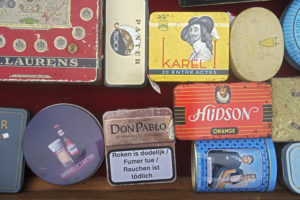
Looking for a solution? We can help.
Headquarters
9211 Corporate Blvd Ste 110
Rockville MD 20850
Satellite Offices
Dallas, TX
Paris, France
San Francisco, CA
Scottsdale, AZ
info@vivaboxsolutions.com
Phone
800-529-1988
Minimum Order Quantities:
RPET Totes: 3,000
Kraft Shoppers: 5,000
Rigid Boxes: 3,000
Folding Cartons: 5,000
It’s Not Medieval; It’s a Renaissance: Why Retail Isn’t Dead
Maggie Tessier
We hear it quite a bit these days: online shopping is killing brick and mortar retail. It’s only a matter of time before it runs traditional stores out of business. Malls are drying up, stores we all grew up with are going out of business, and comparison shopping with the swipe of a finger on a digital screen has customers leaving stores without a purchase because they can buy it online, or somewhere else, for less.
As of the last quarter of 2018, e-commerce sales account for just 9.9% of overall retail sales in the US. That means 90.1% of all purchases are still being made in physical stores. The increase in online sales is growing, which creates a digital disruption of brick-and-mortar, but retail is far from dead and buried. To remain competitive in today’s mobile-fueled marketplace, retailers need to pay closer attention to market demand and conform their stores to changing consumer habits. Better yet, set a new standard for shopping and buying.
Despite the gloomy forecasts of retail, consumers still enjoy the instant gratification that comes from buying products in person instead of waiting for delivery (even if it’s only a day or a few hours). They enjoy the experience of shopping–not necessarily the simple act of purchasing. Those are two different emotions and should be catered to separately. They love a clever, or attractive, package that they can hold and inspect which might offer a spark of wonder and intrigue — all before they buy. They love a curated box that speaks to their inner “foodie” or “self-care” opportunity.
They want to explore new products and brands to break out of the same-old experiences they are used to. They want products (and services) that make them feel catered to and special. Even those on tight budgets love a little luxury that comes with experiential, adventurous shopping. They want beautiful environments with lovely smells, soft items to “pet,” and products with a wow factor (for themselves and others).
Moreover, the products consumers buy from retail stores are not just items they may need or want, but these items are also like souvenirs they bring home from the stores they frequent. I have been in eye-catching stores with beautiful set-ups and soft lighting, and I found myself wanting to buy something, even if it is a small item because I wanted to take a piece of that experience home with me.
As long as retailers are differentiating themselves on unique products and more remarkable shopping experiences (including exceptional customer service, BOPIS services, vibrant environments, and corresponding digital channels that pair well with their stores), it is easy to recognize that physical retail isn’t dead at all. The atmosphere is quite robust for stores that listen to consumer demands and think like consumers, not like legacy retailers.
Stop into Hudson Yards in NYC for a view into experimental retail spaces — touchable art, IG-friendly stores (Atelier Cologne), food halls and unique food stops (David Chang’s Fuku), landmark experiences (The Vessel), boutique coffee (Blue Bottle), stores that offer self- or assisted-checkout (Stance, Dirty Lemon), alongside a family-friendly sweets-and-games experience from Snark Park — all as ways to bring stickiness (borrowing from digital here) to an environment. And it’s working. Try not to feel wowed when you walk in.
Apocalyptic retail forecasts are only accurate for companies that continue down the “one-size-fits-all” branding and dull store experiences where products are stacked on shelves to get lost in the clutter. There is significant opportunity to take advantage of the 50% year-over-year growth that still exists in physical retail–it just has to be different than what has been done in the past.
Learn more about how Vivabox can curate exploratory, experiential packaging for your products to meet current consumer demands and offer your company better options and fresh SKUs for growth in the changing retail landscape.
Looking for a solution? We can help.
Headquarters
9211 Corporate Blvd Ste 110
Rockville MD 20850
Satellite Offices
Dallas, TX
Paris, France
San Francisco, CA
Scottsdale, AZ
info@vivaboxsolutions.com
Phone
800-529-1988
Minimum Order Quantities:
RPET Totes: 3,000
Kraft Shoppers: 5,000
Rigid Boxes: 3,000
Folding Cartons: 5,000
6 Ways to Use Packaging Strategies in Marketing
Maggie Tessier
The concept of using product packaging as an effective and memorable marketing tool has been around for over 150 years. For over a century, companies have utilized creative packaging strategies to ensure that their products resonate in the minds of consumers and stand out against the competition. From the iconic shape of a Coca-Cola bottle to popular cereal-box mascots Snap, Crackle, and Pop, using product packaging as a means to cement a brand identity in the collective conscious is nothing new. However, thanks to advances in technology, we are now able to incorporate product packaging strategies into marketing more seamlessly and effectively than ever before. Creative minds at companies across the United States work tirelessly to make more and more innovative packaging decisions so that their products will be the ones their consumer base remembers.
With the abundance of packaging options available to product manufacturers, it can be difficult to select one that stays on-brand, creates excitement and appeal, and helps distinguish the product from its peers at a single glance. While you want to form a lasting impression among your audience, you also want to make sure they understand what your company and its products stand for, so they can build loyalty to your brand. Here are seven of the most popular ways to use a strong product packaging strategy in your marketing campaign.
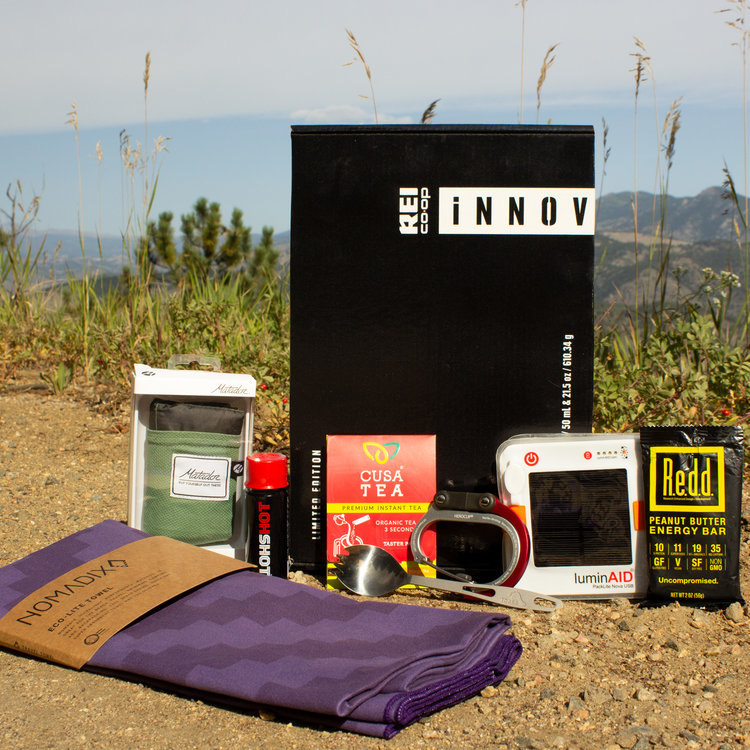
Keep it Green
As we continue to become more conscious of our collective carbon footprint, we are more interested in purchasing products with eco-friendly packaging. By choosing to package your product using biodegradable or reusable materials, you are letting your consumer base know that your company is deeply committed to preserving our environment. You can put your target audience’s mind at ease by using responsibly-sourced materials, such as plant-derived plastics, recycled cardboard, or natural fibers, in your product packaging, so that your consumer base feels good about supporting a company that cares about our planet.
Insta-Worthy Inspiration
We live in a society that loves to share photos of everyday life, and no platform makes it easier than Instagram! Your consumers are constantly on the lookout for “Insta-worthy” photos that will generate buzz on social media. Consider a packaging strategy that absolutely pops in a picture, whether your packaging is luxe, rustic, or just downright quirky. By packaging your product in a highly attractive way that looks amazing on Instagram, filter or no filter, you’re on your way to having it picked up by a brand influencer. This kind of exposure could skyrocket your business overnight!
Stay True to You
When consumers think of your brand and products, what adjective do you want them to use to describe you? The answer to that question can go a long way toward deciding on a strong packaging strategy. It’s important to let your choices be guided by your brand values, not the other way around. For instance, a family-owned company that makes and sells artisanal cheese probably will want their products to evoke imagery of tradition, legacy, and old-fashioned quality, while a company that manufactures high-end cosmetics may opt for ultra-luxe packaging that puts consumers in mind of glamour and celebrity status. No matter what type of product you sell, it is always important to make sure your packaging is in line with the rest of your branding.
Make it Limited
One sure way to generate excitement is to release limited edition products complete with special packaging. Perhaps you want to market goods that are only seasonally available, such as special coffee blends or candle scents, using holiday-themed packaging. Or maybe you have created anniversary-edition packaging to commemorate the number of years your company has been in business. No matter the occasion, a packaging strategy based on a timely or seasonal offering creates a sense of urgency that drives consumers to buy the items you are selling before they run out.

Send a Message
Does your company place value on being an ethical and responsible voice for certain political and social issues faced by members of you target audience faces? A number of companies choose to use their packaging as a platform for sending messages that correspond with the core beliefs of their organization. For instance, if your company is committed to promoting children’s literacy, you may want to use a packaging strategy that incorporates famous quotes from beloved children’s books. Similarly, if you own a business that strongly supports animal rights , you may wish to include messages that echo your commitment to the cause on all of your product packaging. You can use your products to educate your consumer base, which can make a huge impact on our society!
Simplify…and Save!
Sometimes the most effective packaging is none at all! If you are trying to convey a brand image of simplicity, it may be best to employ a minimalist packaging strategy. If, for example, you wish to reduce the wasted space created by standard food item packaging, such as a box or can, perhaps try to use a slimmer, more streamlined container to stand out. Not only does a packaging decision like this help distinguish a particular brand from the rest of the competition, but it also can help a company save money by cutting down on packaging costs. Additionally, a simplified container can add value for consumers who wish to cut down on unnecessary bulk for easier storage and disposal. By keeping it simple and designing product packaging that carries a lower profile than that of your competitors, you’re actually helping it stand out from the rest of the competition!
When choosing the right packaging strategy for your product, keep in mind that, first and foremost, you must choose something that will resonate with your target audience and cause them to select your brand over others on the market. The more you know about your chief consumers, the more you will be able to make informed packaging decisions based on what matters most to them, By sticking to your core brand values and knowing your audience, you can effectively market yourself using distinctive packaging that sets you apart from the crowd!

Looking for a solution? We can help.
Headquarters
9211 Corporate Blvd Ste 110
Rockville MD 20850
Satellite Offices
Dallas, TX
Paris, France
San Francisco, CA
Scottsdale, AZ
info@vivaboxsolutions.com
Phone
800-529-1988
Minimum Order Quantities:
RPET Totes: 3,000
Kraft Shoppers: 5,000
Rigid Boxes: 3,000
Folding Cartons: 5,000
What a White Label VIP Customer Care Service Could Add to Your Business
Maggie Tessier
As a business looking for opportunities to get ahead in the marketing and service focus of modern retailing, your first instinct may be to do it all yourself. Unfortunately, that is not always the best solution.
Building a customized, high-touch VIP customer care solution from scratch by attempting to meet the exact specifications of your business can be time-consuming and complicated. That’s because building your own solution can lead you to make mistakes, like spending too much money developing tools and solutions that already exist in other formats, or you may miss out on resources and expertise in the specific space where you need a focused solution. Or you simply don’t have the bandwidth to train, monitor, and launch a specialized high-touch customer service team.
These pitfalls are easy to avoid if you opt for a white label solution, rather than building one yourself. White label products and services, like the Vivabox VIP White Label Customer Care Service, help you deliver on your Brand Promise & Customer Care commitment using our outsourced team who operate under your “banner” — that’s the white label part.
Vivabox’s White label VIP Customer Care Service offers you the following benefits:
-
High-touch, limited quantity & limited time only rewards, gifts, influencer packages, and pop-up shop gifts, and special experiences need a specialized customer care team experienced in delivering above and beyond. We do that for you.
-
Our team uses software, yes, but they’re people. Real people. Customer care experts adept at delivering special products and special value to your most important customers.
-
It’s quick and easy to brand. We represent your aesthetic, tone, and service level as if it was…you! White label solutions are generally fully integrated, which makes branding easy. You can be free from concerns about needing to spend time and money on research or development because white label services are doing the work for you. Simply enough, we help propel your brand’s experience for you so you don’t have to cut corners that could backfire on your brand identity.
-
You can scale your services portfolio. The most significant benefit of using white label marketing is to broaden your offerings. You don’t need to specialize in each and every service that you offer, and outsourcing provides a much broader range of services for your business.
-
You can focus on your core competencies. Core competencies benefit from scaling your services. In many cases, the solutions that companies hope to build themselves fall far outside of their areas of expertise. It’s not smart to stretch your resources to do something that doesn’t fit within your core competencies. Pre-packaged solutions offer your business an opportunity to trust the experts in the specific space you are focused on, and avoid making the same mistakes that others have made before you.
-
Improve your customer loyalty, retention, and NPS. Broaden your rewards and event strategies. With a third-party provider taking responsibility for most important service delivery, you can focus more time and effort on managing your retail spaces, relationships, and product array. Every time your Growth or Marketing team comes to you with a special promotion, or award tier, you won’t have to say no to them just because you don’t have the capabilities in-house.
White label solutions, like the one Vivabox provides, help businesses use unique branding and high-touch customer care so you can offer a product or service without investing in infrastructure or technology creation. Done and done — at the speed of today’s retail environment.
Looking for a solution? We can help.
Headquarters
9211 Corporate Blvd Ste 110
Rockville MD 20850
Satellite Offices
Dallas, TX
Paris, France
San Francisco, CA
Scottsdale, AZ
info@vivaboxsolutions.com
Phone
800-529-1988
Minimum Order Quantities:
RPET Totes: 3,000
Kraft Shoppers: 5,000
Rigid Boxes: 3,000
Folding Cartons: 5,000
ShopTalk 2019. The 10 Things Impacting Your Business Today & Tomorrow. VBX 2-Min Summary.
Maggie Tessier
The engaging themes (scientific data point of most attendees and most number of mobile phones aimed at speakers and slides) at Shoptalk Las Vegas this past week were: accelerated change, AI, AR & VR-assisted experiences, influencer marketing, and the role of IRL store associates.
Our summary:
-
Shopping should be fun & social (literally and via mobile).
-
Buying should be easy.
-
Corporate silos need to make way for the pure fluidity of IRL —> Digital that consumers move through on their self-guided journeys to conversion and potentially, loyalty.
-
Caution Inhibits Innovation.
-
Hone a physical retail competency that creates moments worth lingering for.
-
The mobile screen is your new window display.
-
Change the metabolic rate of your company (esp. senior leaders)
-
Make Influencer and digital activations part of the product development process – not so late in the game. We call it the new marketing supply chain.
-
From Erik Nordstrom to Barney’s and Crate & Barrel executives, there was a light shone on the changing role of physical stores and the store associates inside. There was recognition that physical stores are a convenient (or at least can be) place to manage returns and for in-store pickup that puts CX front and center. Recognizing that means looking at the ways associates are trained and incented because this is a critical moment for consumers and can engender real loyalty. Additionally, it means (in our opinion) looking at attribution differently – for example, Nordstrom shared that 50% of their store visits begin online.
-
We’re struck by the efficacy of a high-concept custom box/bag kit to help bridge the shopping & buying divide. Like retailers and brands, we are leaning into smart packaging to make these experiences even more interesting for the consumers and to reveal new first-party data.
Vivabox works with CPG, Beauty, Mass, Specialty, Club, and Drug and in every category, the right trial, education, loyalty, and influencer box respects the privileged role of being in someone’s hands and home. Now that’s a brand experience worth sharing, talking about, and remembering.
Looking for a solution? We can help.
Headquarters
9211 Corporate Blvd Ste 110
Rockville MD 20850
Satellite Offices
Dallas, TX
Paris, France
San Francisco, CA
Scottsdale, AZ
info@vivaboxsolutions.com
Phone
800-529-1988
Minimum Order Quantities:
RPET Totes: 3,000
Kraft Shoppers: 5,000
Rigid Boxes: 3,000
Folding Cartons: 5,000
Augmented Reality (AR) 'Smart Packaging' Opens Up New Packaging Potential
Maggie Tessier
We talk a lot about how packaging is one of the few tangible relationships a brand has with the consumer, as well as its importance to a brand’s narrative and loyalty. This recognition is based on the density of smartphone ownership, sales trends, and overall connectivity.
During a time when everything is mobile (yet everything still has a barcode), augmented reality (AR) packaging, aka digital or smart packaging, is here. It’s the next frontier in experiential branding because it offers enormous untapped potential for retailers and brands to revolutionize packaging and the way they connect and engage with consumers today.
At a time when marketing departments are spending more on digital advertising than ever before–and users are connecting to the web through mobile more than ever before–brands are sitting on an unrealized mobile marketing channel that’s been dormant in every supermarket, home, office, and shopping destination until recently.
AR packaging has become a new way of expanding a brand’s narrative–to offer background information in clever ways and to offer consumers a way to attach to the brand emotionally. It provides another innovative dimension to packaging that gives consumers a surprising experience.
A great example of smart packaging can be seen with Anheuser-Busch, which created a collectible Budweiser cup that lit up in response to crowd noise during the 2018 FIFA World Cup. There was a circuitry built into the beverage packaging that responded to environmental sound with LEDs that flashed, which visually riled up the crowd’s energy during games.
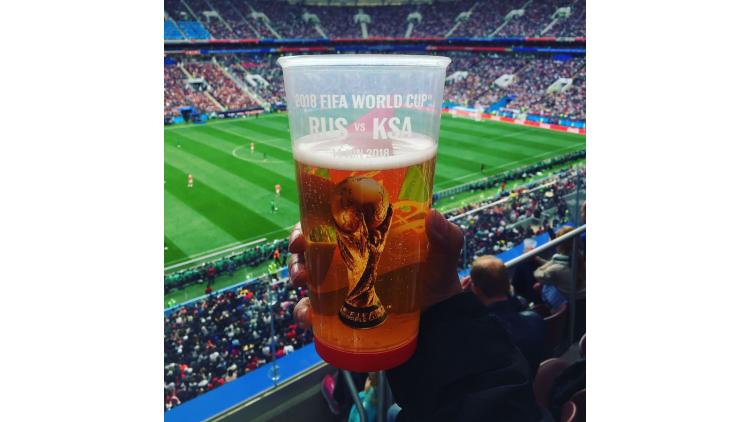
Packaging Digest (Aug. 29, 2018)
Another interesting, smart packaging design comes with “auto-replenish,” which was created by Amazon to support products that are regularly used and need regular refills or replacement. Products can use smart packaging to notify consumers when it is time to reorder so they can request more through their Dash Replenishment Services (DRS).
Researcher Pan Demetrakakes explains, “So far, smart packaging has been thought of mostly in terms of connection to ‘passive’ online information, like recipes or discount offers. However, it has the capability to unlock the full interactive potential of the internet.”
In light of such research, founder of London-based branding agency SharpEnd, Cameron Worth talks about the potential for smart packaging to integrate with the Internet of Things (IoT): “Traditionally, there has been no way to close the gap between the brand and consumer via the product, but now with the IoT, we can use smart packaging to bring brands directly into contact with individual consumers and use this opportunity to build brands post-purchase.”
At Vivabox, we are actively building event and influencer kit experiences with AR and thinking about how trial and loyalty consumer journeys can be impacted with smart packaging.
Although there is a practicality in association with the Internet and ordering, brands also have the opportunity to develop deeper brand connections through stories. For example, pasta sauce brand Francesco Rinaldi recently updated their brand with a smart packaging feature that enabled consumers to interact with brand spokesperson Mrs. Rinaldi. This digital approach allows consumers to pick up the jar from the shelf, scan it, and hear the story of the product directly from the brand “mascot.”

Packaging Digest, Dec 13, 2018
These variations of smart packaging also offer brands some essential opportunities/thought starters:
-
Imagine picking up a trial item, turning on your AR to hear from the perfumer who made the product waxing poetic about the formula and the ingredient origins Star Trek style in the aisle of the store or pop-up.
-
Extend the available real estate for product messaging and promotional offers.
-
Increase brand engagement especially via social sharing while this is still relatively new.
-
Serve contextually relevant information at the point of purchase and consumption.
-
It also drives better consumer data by offering real-time data analytics on a serialized basis, creates a better understanding of users, and helps deliver more measurable results and value-added benefits to customers.
Vivabox can help you with better packaging and connect you with AR experiences to help take your brand story to the next level of digital packaging sophistication.
Looking for a solution? We can help.
Headquarters
9211 Corporate Blvd Ste 110
Rockville MD 20850
Satellite Offices
Dallas, TX
Paris, France
San Francisco, CA
Scottsdale, AZ
info@vivaboxsolutions.com
Phone
800-529-1988
Minimum Order Quantities:
RPET Totes: 3,000
Kraft Shoppers: 5,000
Rigid Boxes: 3,000
Folding Cartons: 5,000
How Packaging and Branding are Bringing CBD Mainstream
Maggie Tessier
Research that addresses the benefits of cannabinoids (CBD) on the human body is becoming more recognized and accepted, and the awareness of wellness, skin care, and CBD is part of that growing recognition. PSA: cannabinoids and get-you-high marijuana are not the same things. CBD does not contain the ingredient that gets you high (THC).
There is still a ways to go, as the FDA continues to move slowly in its endorsements for cannabinoids and it is not yet legal in several states, but there are many companies, startup and established alike, currently embracing–within legal parameters–CBD in beauty and beverage products, especially as state and federal laws become more inclusive of CBD products.
As the public becomes more aware and accepting of the benefits of CBD in beauty products (and beyond), branding and packaging will be a key step to consumer trust and confidence, especially in these transitional stages.
More than that, though, new entrepreneurs and brands are doing away with marijuana-leaf logos and demystifying the dosing and buying of CBD by providing education and premium packaging designed to increase both understanding and acceptance of these products and this ingredient.
First, a Quick Science Lesson
In a recent CBD for Life article, they explain that scientific researchers have shown undisputable CBD connections beneficial to the human body. “It is because of how CBD communicates with the endocannabinoid system,” the article said. The human body has a system of endocannabinoid neurotransmitters, or receptors, and “These receptors are spread throughout the body, but are observed mostly in the skin.”
What has been scientifically proven is that the human body has a natural endocannabinoid system, which means there is a chain of receptors that connect every part of the human body, from the tissues–to the nerves–to the mind. Phytocannabinoids are produced in nature (the marijuana plant system, for example) and can be consumed by the human body to create a relationship of benefits. Although cannabinoid products can be found in other types of plants, like echinacea, liverwort, pepper, and even chocolate, CBD in phytocannabinoids just so happens to have the most potent and beneficial effects for the human body.
CBD and the Beauty Industry
According to a January 2019 report by Beauty Packaging, “Cannabis is known for stress-reducing and pain-relieving benefits. Use of CBD products [for skin] can reduce redness, irritation and even acne.”
Neiman Marcus recently introduced their CBD beauty line and Kim D’Angelo, beauty buyer at Neiman Marcus, recently explained that
“Cannabis beauty brands are becoming increasingly popular and CBD products are the next big thing in beauty.” Such products are comparably priced to other luxury brands like Sephora, L’Oréal, and Estée Lauder.

https://www.neimanmarcus.com/p/ildi-pekar-sleeping-mask-infused-with-cbd-oil-1-1-oz-30-ml-prod219110020
Neiman Marcus I-Pekar CBD Oil Skin Care
Another well-established company, Barneys New York (as well as their locations in Chicago, Beverly Hills, and Las Vegas), has also released a new CBD skin care line “Lab to Beauty.” They promote their products by touting “the pure potency of plants, combined with the healing effects of CBD.”

https://www.barneys.com/product/lab-to-beauty-the-cbd-drops-506111933.html
Barneys New York “Lab to Beauty”
More so, independent startups like CBD for Life and Fleur Marché are offering quality products and walking consumers through the process if they are unsure of their state’s legal boundaries. Furthermore, their packaging starts to play more on the natural, sustainable elements of cannabinoids rather than the more stereotypically rebellious aspects.
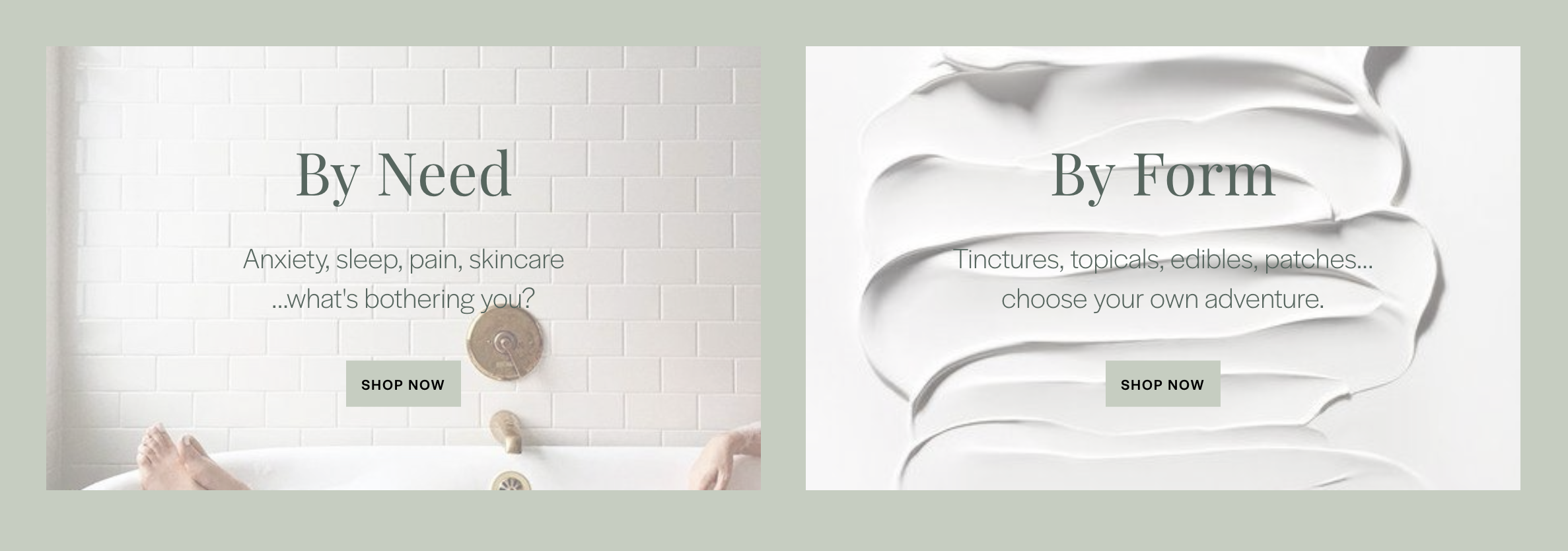
https://fleurmarche.com/
Fleur Marché
Of course, because of current restrictions, they are only sold in locations where states have already legalized medicinal and/or recreational use as well. Although this is an initial hindrance for the mass consumer, the trend shows CBD and other cannabinoid products are becoming more accepted and could soon be in a store near you, or at least online ordering without repercussions. It is the subtle and medicinal message that continuously needs more strategic attention.
Why Packaging and Branding Matters
Now that we have addressed scientific and legal issues (phew!), let’s get down to how packaging becomes the perfect bridge between consumer skepticism and confidence, as well as overcoming cannabis industry stigma.
Most consumers are still unaware of the differences between hemp, THC, and CBD–and the image of legalization is a narrow one, which depicts a “4:20” recreational lifestyle or, say, images of Shaggy from Scooby Doo: “Zoinks!” This is an unfair representation, and many consumers are starting to understand this. But the packaging and branding industries can easily help alleviate this. Here are a few examples:
First, Vivabox has been addressing the importance of sustainability with our clients, and in an industry like cannabinoids, it is a primary concern. As organic products take a lead in more sustainable packaging (or at least they should), the CBD industry tries to adapt similar branding and packaging objectives: from the Earth, for the body. These connections are beautifully symbiotic.
For those consumers who are already on board with CBD (or any other cannabinoid product), it is an added perk: brown glass bottles, eco-alternatives to bubble wrap–like green wrap or corrugated bubble wrap–and packaging made of 100% recycled boxes, soy ink, and recycled filler/packaging paper. And for those who require more subtle branding and packaging, leave off the marijuana leaf in the design, or at least downplay it.
Consumers are savvy and they don’t want to be reminded of the stigmatic images (even if they rationally know much of it is incorrect). If consumers are dropping premium prices for premium CBD products, they also (if only subconsciously) require smart and subtle branding and packaging. It is a tightrope walk these days, but packaging can also create change in perspective and offer consumer confidence.
Here are a few examples of how Sephora (current client) is creating a balanced brand and packaging campaign:
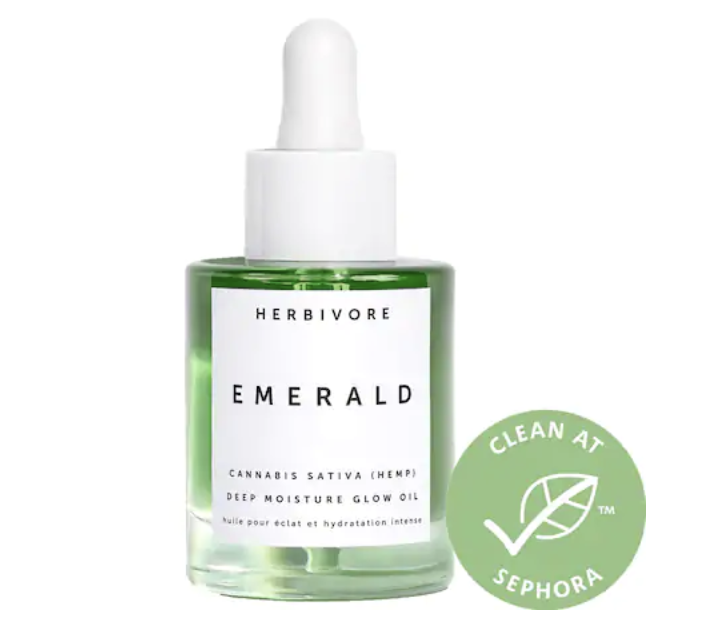
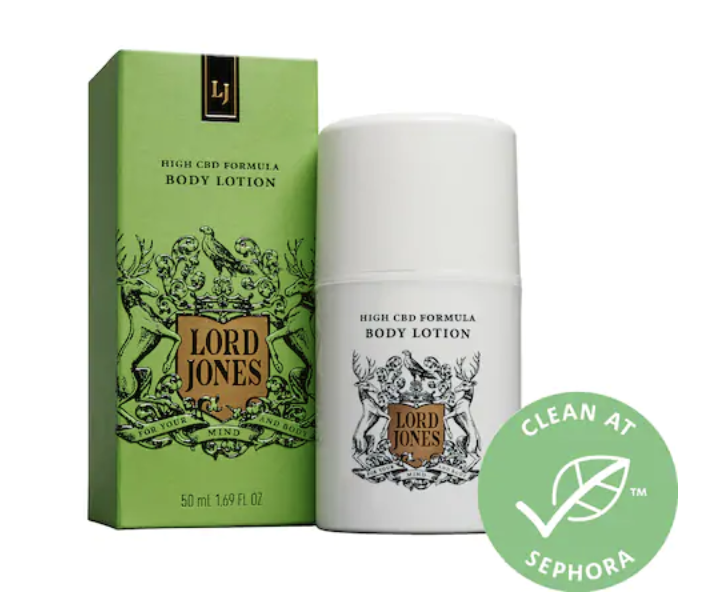

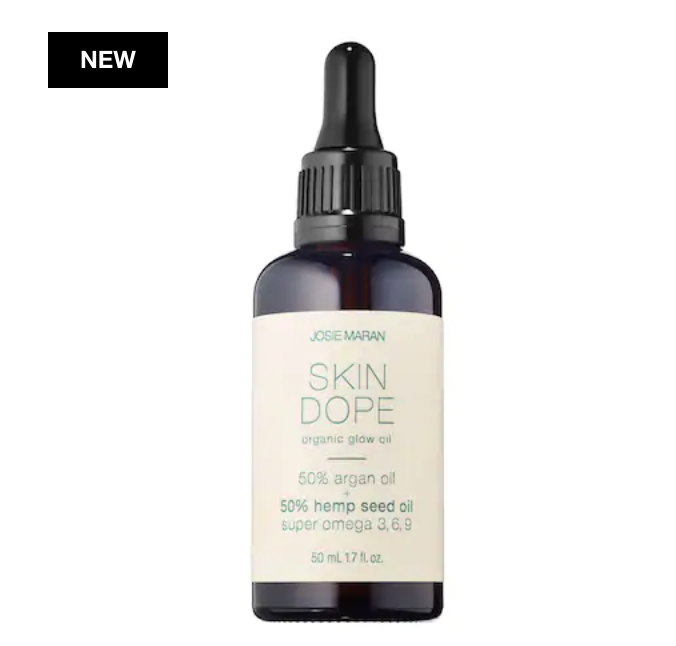
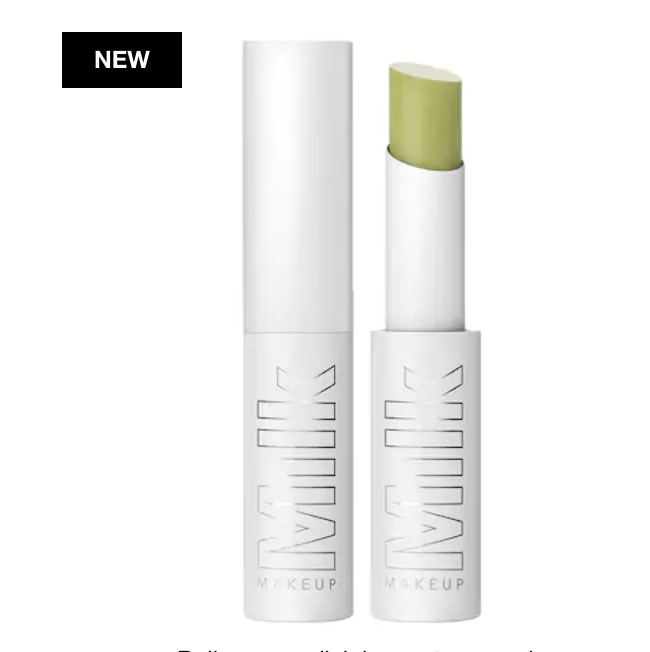
https://www.sephora.com/search?keyword=cbd
Sephora: Herbivore Organic, Lord Jones, Kiehl’s, Josie Maran, and Milk Makeup CBD products
For instance, although there are marijuana references, “Kush” and “Dope,” for Milk and Josie Maran primary packaging, it is not at the expense of good branding and messaging. More so, the Kiehl’s and Herbivore pale green glass (an organic go-to) and high-end typography and packaging suggest they are in on the fun of being able to publicly talk about “weed” while not forsaking their commitment to high quality products.
The rhetorical strategy here does not shy away from its contents but rather marks it acceptable by way of common packaging found in similar non-CBD beauty products. As for the following packing for Vertly, apothecary and luxury elements are used to validate CBD’s confirmed medical and beauty benefits.
The conversation is inherently, “Why would Sephora, Barney’s, Neiman Marcus support this if it wasn’t true?” And the perk? Consumers can buy these and not come off as a “pothead,” and let’s face it: that is what many mainstream consumers fear. This transition from stigma to benefit is all in the packaging. Period.

http://nymag.com/strategist/article/best-cbd-skincare-products.html
Yes, informing the general public of the differences between TCH, CBD, and Hemp are important. They have very different purposes, but CBD has the opportunity to brand itself as something outside of the “4:20” culture. The CBD PR movement all starts with education, but really, it is best promoted with packaging and branding first. These high-end companies have figured it out: the medicinal benefits have become better received in many states, and are recognized as having premium perks for those who can afford it. Packaging that reinforces positive branding while eliminating harmful cliches is possibly the most important first step.
Smart branding and packaging (which is one and the same these days) is the best move forward for beneficial products which were once stigmatized, but no longer are. At Vivabox, we’d like to see a multi-branded CBD ‘starter’ kit with great branding, education, trial, and social media hooks. It’s exciting to see packaging as much more than a box. To us, it’s where the story starts.
Looking for a solution? We can help.
Headquarters
9211 Corporate Blvd Ste 110
Rockville MD 20850
Satellite Offices
Dallas, TX
Paris, France
San Francisco, CA
Scottsdale, AZ
info@vivaboxsolutions.com
Phone
800-529-1988
Minimum Order Quantities:
RPET Totes: 3,000
Kraft Shoppers: 5,000
Rigid Boxes: 3,000
Folding Cartons: 5,000
5 Retail Trends You Can Actually Activate for 2019
Maggie Tessier
In 2019, the market will be defined by emerging technologies that change the way consumers interact with their favorite brands, a more tangible experience (online and on-site), and the emergence of new types of e-commerce.
Let’s take a look at five important trends that will shape retail in 2019 and forward.
1. Brand as Culture
Millennials’ changing preferences and attitudes regarding corporate responsibility and social consciousness have already impacted how retail brands present and position themselves. The trend has resulted in brands equating their internal culture with their exterior identity. Companies are increasingly engaging consumers outside of traditional shopping parameters and becoming cultural figures.
What ideas can you bring to market if you think of physical intercepts as a cultural representation of the connection you have with your consumers vs “buy it now”
Companies can embrace physical and ideological experiences that immerse customers into a full buyer’s cycle. The days of clever campaigns being enough are pretty much done. Companies will have to consider the image their brand conveys to the world in ethos, all senses, and in packaging (which are blending more than ever).
2. Experiential Retail
The old model of in-store and online retail strictly focused on products being sold. However, consumers have been moving away from strictly shopping for products and are now searching for a more engaging experience. The trend has been primarily driven by millennials and their preference for experiences over things.
Consumers are shopping more with their emotions rather than their wallets. Note, we said shopping. Physically walking into a store should be an escape, a chance to browse, a chance to meander. Buying, on the other hand, is assumed to be pretty quick and easy — a few clicks, done.
Re-designed signage and remodeling a store aren’t enough, both the stores and the brands now realize they can only survive if they create something worth visiting.
For example, stores like Sephora have rethought their retail experiences by combining traditional elements, trial, loyalty programs, and their mobile apps pretty seamlessly. (they’re a client, we’re biased)
Samsung unveiled a $43 million “pop-up” that features its products but doesn’t have any for sale.
The emergence of virtual reality, augmented reality, and improved mobile connectivity have added new layers of experience to add to their retail models.
Packaging for online and on-site stores has also emerged as an essential experiential touchpoint. Gone are the days of brown boxes with packaging tape, bubble wrap, and packing peanuts as “the last mile experience.“
Consumers want their packaging to mean something more. To mean something, actually. Colors, fonts, textures, and materials are all a selling point, as well as its ability to be recycled or repurposed. It’s almost as important as the product it holds.
3. Faster Shipping
E-commerce continues its march toward becoming the most popular purchasing medium. In September 2018 the sector expanded by 11.4%. Today, most major brands have an online presence, and they all offer comparable prices. Even stores like Amazon and Walmart have become largely competitive, so retailers seeking to differentiate themselves have had to find other ways to deliver value.
A current Marketing Charts study found that the amount of time people are willing to wait for free shipping has dropped from 5.5 days in 2012 to 4.5 days on average. Programs like Amazon Prime have made two-day shipping the standard, so cutting down on shipping time is vital for any e-commerce business looking to stay on top.
In-store pick-up, new delivery systems, special access, or making the package worth waiting for are all ways to combat warp speed expectations.
4. Subscription E-Commerce
Today’s buyers are also increasingly seeking shopping/buying that is tailored to their preferences and delivered directly to their doors. These trends have resulted in the emergence of subscription e-commerce, which means businesses curate products and ship them to customers with regularity.
According to a recent report by McKinsey & Company, 15% of online consumers signed up for subscription services in 2017, and that trend is only growing.
That said, marketing and maintaining a subscription base can be expensive for some brands and retailers. This is an area where a well-defined test is a must.
5. Multi-Channel, aka Omnichannel, aka The Way Consumers Shop & Buy Naturally in 2019
Even though many brick-and-mortar stores are closing, they still play a significant role in the purchase process. The difference is that it has transitioned from the primary point of sales to being part of a broader retail strategy. Instead of a single touchpoint for consumers, the growing trend in retail has been to expand how brands use brick-and-mortar to catch leads and convert them.
How can retailers maintain omnichannel active and keep personalization and fulfillment streamlined?
This calls for deep integration across all channels, including websites, marketplaces, social media, and brick-and-mortar. It’s time to get departments really working together, and sharing data, and thinking differently about sales attribution. The consumer is already fluid, but most retailers and brands are less so.
Multi-channel is vital for captivating consumers and keeping them engaged from first impressions to the point of sale. Focusing on providing excellent experiences across channels is the best way to stay vital in the upcoming years. Oh how we love a good CX strategy.
The latest trends in retail are driven by a combination of a changing technological landscape and the shifting preferences of consumers created by millennials. By embracing these trends and preparing for them, retailers can look to 2019 as another favorable opportunity to grow.
Looking for a solution? We can help.
Headquarters
9211 Corporate Blvd Ste 110
Rockville MD 20850
Satellite Offices
Dallas, TX
Paris, France
San Francisco, CA
Scottsdale, AZ
info@vivaboxsolutions.com
Phone
800-529-1988
Minimum Order Quantities:
RPET Totes: 3,000
Kraft Shoppers: 5,000
Rigid Boxes: 3,000
Folding Cartons: 5,000
Know Your Customer: Developing Personas for Packaging Strategy
Maggie Tessier
The key to a successful marketing or branding campaign starts with understanding your target audience, and, a well-defined audience begins with developing buyer personas. In the age of IG and e-commerce, your primary and secondary packaging design should most definitely be part of your CX process and strategy.
A buyer persona is defined as a well-developed character created from customer trends and demands. Most companies attract more than one group of people, so they find it beneficial to develop three-dimensional personalities with names, ages, occupations, certain social statuses, education levels, aesthetic principles, family size, buying trends, and more. Brands interact with people, not cardboard cutouts, so developing these personas are helpful to create a range of insights.
Simply put, developing personas is important, and it is incredible what insights surface when companies take the time to get to know them.
Personas and Packaging
When thinking about brand development and the multiple personas you must nurture, packaging becomes a primary touchpoint. Outside of the actual product, the package is the most tangible branding tool a business has, and these personalities can have a significant impact on your design strategy.
For example, if you’re targeting an older persona, you may want to work with more traditional packaging or play with nostalgic designs that tug at their heartstrings or work with packaging that can be repurposed. You also want to assess your font size and contrast and including smart and obvious ways to open the package for hands that have lost some dexterity.
If you’re going to attract a millennial persona, you may want to develop a more sustainable solution that works with contemporary or forward-looking design and trends. And be sure it has an element of IG-bait.
Packaging the same product in different ways can be a great way to embrace all of your personas without exclusion.
The Power of Personas
Once your business has developed well-rounded personas, what can you do with them? You can do anything! Hopefully, you use them to make every brand decision. Considering that it is the consumer that creates demand, it is essential that all marketing and branding strategies keep all personas in the forefront of every decision.
Consulting personas for insights into what your audience will identify with and what will capture their interest is essential to determining the shape, font, color, textures, and materials you use in your packaging design.
As you develop your packaging for your personas, don’t forget to measure your successes and room for improvement. Analyzing past data and current customer responses is a great way to test if your packaging ideas are meeting consumer standards and how they may be changing. Don’t let your personas get stagnant. They should be an ever-changing point of reference to keep your brand, and packaging, moving forward.
Looking for a solution? We can help.
Headquarters
9211 Corporate Blvd Ste 110
Rockville MD 20850
Satellite Offices
Dallas, TX
Paris, France
San Francisco, CA
Scottsdale, AZ
info@vivaboxsolutions.com
Phone
800-529-1988
Minimum Order Quantities:
RPET Totes: 3,000
Kraft Shoppers: 5,000
Rigid Boxes: 3,000
Folding Cartons: 5,000



